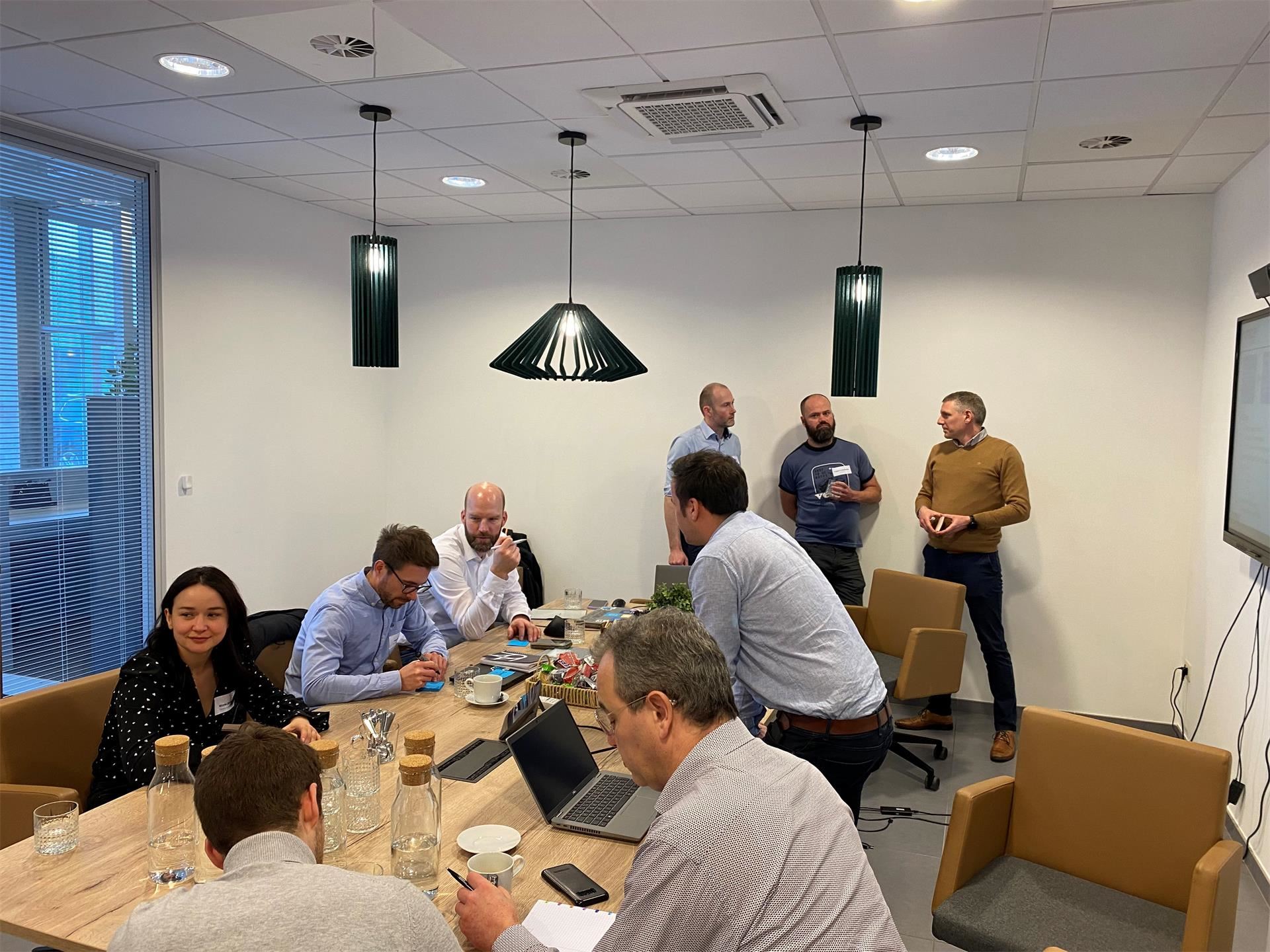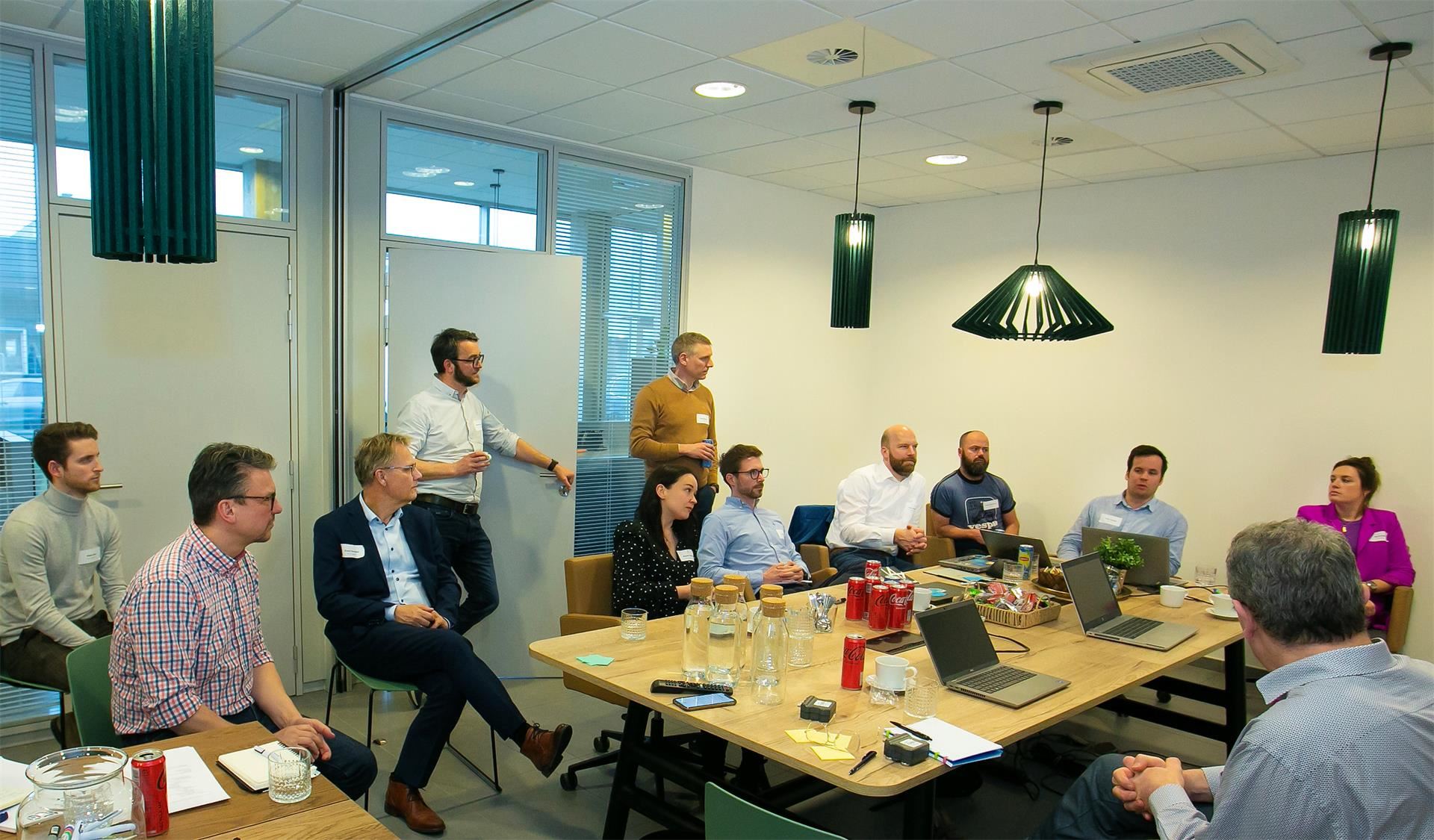That’s why Inimco brought together several of our customers to exchange experiences and learn from one another. AkzoNobel, AquaSecurity, Henkel, Picanol, and Tomra Sorting are active in different segments of the market, yet they share many challenges… and opportunities.
One Thursday afternoon in March, we gathered these customers around the table in Inimco’s new headquarters to discuss the different stages of an IoT project. We have summarized this conversation into seven insights.
Read on to learn:
- Why other companies’ experience will conduce to your success.
- Why doing a Proof of Concept will help you make the right decisions.
- Why building a business case is key to getting continued management support.
- Why standards are the best route to take – for your own peace of mind, and for your budget.
- Why you need to learn both the business and technical language of all your stakeholders.
- Why zero-touch maintenance is not yet a reality.
- Why you need to build a business discontinuity plan in case of decommissioning equipment.
Learn before you leap
Setting up the first IoT implementation may look like a daunting task, especially if you have little experience with IoT. Should you stick to the PLCs you know, or invest in add-on sensors, or a combination of both? industrial PCs with embedded software? Should you use wired, WiFi or LORA technologies? Where should you start? What technological equipment should you choose? How can you estimate how initial choices will impact your budget once you start scaling? Larger organizations may have more time than smaller ones to experiment – so how do you make the right choices from the start? As we found out during the round table, there is a lot of experience around in different companies. Consulting colleagues about how they started is definitely the best option to learn. And as long as they are not competitors, they will probably be quite open and willing to share their knowledge. They can tell you what pitfalls to avoid. And it goes without saying that you can also turn to a company that has ample experience by working in different industries and with different sizes of companies.
Do a proof of concept
Probably the best way of gaining experience yourself without spending too much budget is to do a Proof of Concept (PoC). This allows you to test different types of equipment and compare their behavior and efficiency. It will also tell you what data you are gathering and what you can learn from this data. You will also find out which data assets are more valuable and need to be captured all the time and which data elements are perhaps less necessary to collect on a constant basis. You start the PoC with a minimum amount of data and equipment that will still allow you to draw some conclusions about a bigger rollout. By finding out early what is less applicable to your environment, you will mitigate the risk when you start the full implementation.
Build a business case
You may be convinced that you need to extract more value from your data. Or your Management may say, ‘do something with IoT.’ But to get the necessary support and budget, it’s a good thing to build a business case, showing the results you will get from your IoT projects. Think about the minimum budget you need, the maximum budget you can get, and what you will do to stay on budget. When building this exercise, it is key to list as many use cases as possible and estimate the savings or extra revenue this will generate. Outline your data strategy. Are you looking to monetize your data? Are you using data to deliver better customer service and increase the lifetime value of customers? Or are you looking at OEE, trying to maximize efficiency and potentially avoid new investments? During the round table, one of our customers showed that by comparing efficiency between factories in different countries and by increasing efficiency where necessary, an eight-million-euro investment in a factory was avoided as an additional saving on top of OEE improvements. Now that is a powerful argument when requesting a budget! When building the business plan, don’t forget to add indirect benefits and savings, such as savings through offering remote services rather than having to go on-site and improving the value of existing service contracts. Also outline the cost of doing nothing and losing competitive advantage. As part of the business plan, build a dashboard that is constantly updated with the latest results. That way you can ensure continued support from upper management. Don’t just tell, show!
Stick to standards
During the Proof of Concept, you can still experiment with all sorts of equipment and software, but once you start your project, it’s best to stick to industry standards, both for the gear you are using and for the data you want to collect. There are many advantages to using standards:
- Standard material is usually cheaper, as having competing vendors will automatically put some price pressure on them.
- Using standards allows you to build a more flexible architecture. By building standardized layers, you can make the data layer independent from the collection of data and from the way data is returned to the OT layer. You don’t want to get forced to rebuild the entire environment when you switch PLC vendor.
- Sticking to standards prevents vendor lock-in. If one of your business partners starts asking unreasonable prices or disappears from the market, you can keep using your existing infrastructure and simply replace one vendor with another. Brand loyalty is commendable, but brand independence is better for your budget.
- Standard equipment is easier to maintain and it’s easier to find people who have the right skills to take care of the infrastructure. This is advantageous for your budget too.
(long read continues under picture)

Speak the language of your customers
Your project will be an important change. For you, but also for many of your colleagues and – if you are a machine builder – also your customers. Change management is a key element in the success of your project. This means you will have to talk about the project with your different stakeholders: plant managers, team leaders, but also your IT department. There is still a gap between Operational Technology (OT) and Information Technology (IT) and you may have a hard time convincing the Chief Information Security Officer (CISO) of your company to open certain connections. With the threat landscape becoming more complex, data security is a huge topic for many organizations. If you are a machine builder, it may be even harder to convince the IT department of your customers to open up their systems so you can collect data. This means you will have to find the right arguments to get cooperation, not only from IT people but also from businesspeople, for instance, weavers or waste managers. Every profession has its own lingo, so be sure you speak the same language. Think about how to explain the benefits of the solutions to your different target personas.
Think about maintenance and scalability
As one of the participants in the round table said: “The appetite comes with the eating.” As you go along with the project, new use cases will pop up, especially if you spend a lot of time with your business users. As they get more familiar with what you are doing, they will help you find extra opportunities to make data work for you. So you will need to set up a flexible architecture (see the paragraph on standards) so you can scale your project to accommodate these extra requests. This is something you also need to take into account when building your business case. For instance, how will your increased Azure consumption impact your budget?
IoT projects are not things you can ‘set and forget’. They are living things. Operating systems require updates, and any device in your IoT network may have its own upgrades. Think about how you will maintain your implementation after go-live. Do you have the necessary skills in-house? Will you build those skills internally? Or will you outsource maintenance to an external party like Inimco? Opting for managed services will assure you of the right skills and offers flexibility when you need more manpower to rapidly scale. If you outsource, ensure that roles and responsibilities are clearly defined and put to paper. Of course, technical tools are available, for instance, Azure Device Update, but a full zero-touch experience is still a long way off. We can dream of having Industrial IoT systems that are as easy to deploy as your music system at home, but we are not there yet.
(long read continues under picture)

Keep the end in mind
Any company wants to keep its customers for as long as possible, but nothing lasts forever. External factors may necessitate companies to stop working together. Just think of the companies that suddenly had to cut their ties with organizations in Russia, or of customers that go out of business, or simply stop using your solution. That’s why it’s important to keep the end in mind. You may have devices on the customer’s premises that you cannot repossess. Are these devices still connected to your own network, sending or requesting data? Can you block the device on a firewall level? On a SIM card level? Are you exposed to any vulnerabilities? Do you need to invalidate certificates? Can you wipe all settings of a device? Many organizations are investing in business continuity plans, but perhaps you also need a business discontinuity plan.
Conclusion
Exchanging experiences with other customers is comforting if they have made the same choices, but challenging if your colleagues have taken a different route and have good arguments for doing that. But, as we found out during our customer round table, sharing best practices and lessons learned is a great way to elevate your own IoT projects.
If you are interested in joining our discussion group as an experienced practitioner or as a novice, do contact us. It will be worth your while, for your company, for your projects, and for your career.